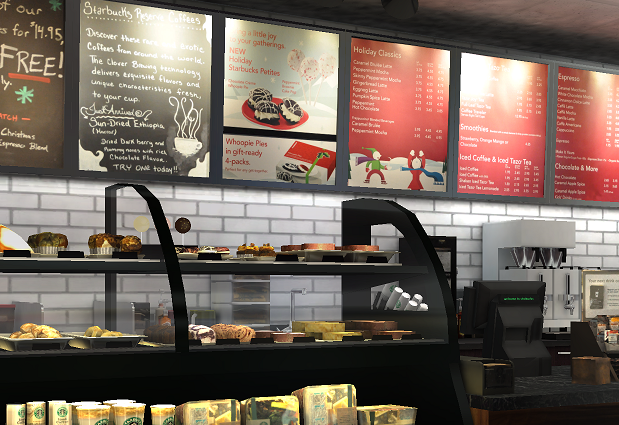In our digital age, technology continues to reshape how we experience everyday activities, and the retail industry is no exception. Augmented reality (AR), a revolutionary concept that merges the virtual world with the real one, has become a dynamic force within the retail landscape. While AR has had a profound impact across multiple sectors, the effect of AR in retail is nothing short of transformative, bringing about innovative ways for retailers and brands to work, and for consumers to engage with products, brands, and the shopping process itself.
As we delve into this guide, we’ll explore how augmented reality technology reshapes the retail industry and paves the way for a new era of personalized and engaging digital experiences. Whether you’re new to AR or simply curious about its applications in retail, this guide provides a comprehensive introduction to this exciting technology.
Understanding Augmented Reality
Augmented reality is a groundbreaking technology that merges the digital and physical worlds in real-time, enhancing our perception of reality. Unlike Virtual Reality (VR), which immerses users entirely into a simulated environment, AR adds digital elements to the real world, creating an interactive and blended experience. AR takes the surroundings you see and overlays them with additional information, visuals, or animations, transforming everyday experiences into something extraordinary.
Augmented Reality (AR) vs Virtual Reality (VR)
While both AR and VR offer immersive experiences, they have distinct differences. VR fully transports users to a computer-generated environment, isolating them from the physical world. On the other hand, AR enhances the real world by layering digital content onto it. Imagine trying on virtual clothing without changing your outfit or visualizing how a new piece of furniture would look in your living room – that’s the power of AR.
AR applications operate through smartphones, tablets, and specialized AR glasses. AR technology detects the physical environment and seamlessly overlays digital content using cameras and sensors. The result is a cohesive blend of reality and digital information.
AR finds applications in various industries, showcasing its versatility:
Retail: AR is transforming the way we shop. Customers can have interactive experiences that mimic real-life scenarios, including virtual fitting rooms and virtual try-on for clothing, visualizing furniture in their homes, and even seeing how makeup products look on their faces before making a purchase decision.
Gaming: Popular games like Pokémon GO and Harry Potter: Wizards Unite have integrated AR, allowing players to interact with virtual characters and objects in their natural surroundings.
Education: AR brings textbooks to life, providing interactive explanations and 3D models, making learning engaging and interactive.
Tourism: AR enhances sightseeing experiences by offering virtual guides, historical context, and interactive information at tourist destinations.
Healthcare: Medical professionals use AR for training and simulations, allowing them to practice procedures in a controlled digital environment.
As augmented reality continues to evolve, its applications across various sectors will only become more diverse, enhancing our interactions with the world around us and offering a glimpse into a more connected and digitally-enhanced future.
The Role of AR in Retail
Enhancing the In-Store Experience
In today’s retail landscape, augmented reality drives a paradigm shift in how customers interact with products within physical stores. Interactive displays and immersive try-on experiences bring products to life, allowing customers to visualize how items look or function. Personalized recommendations and virtual shopping assistants offer tailored suggestions, making the shopping journey more engaging and customer-centric.
Elevating E-Commerce
The impact of AR extends beyond brick-and-mortar stores into the realm of e-commerce. Virtual product visualization and customization enable customers to see how items fit into their surroundings before purchasing. AR-powered sizing and fit assistance help overcome the challenges of the online shopping experience, ensuring that customers make informed decisions about sizes and styles, resulting in reduced returns and increased customer satisfaction.
Bridging the Online-Offline Gap
Augmented reality is a powerful bridge between physical retail spaces and the digital realm. Brands can integrate AR experiences across various shopping channels, creating a seamless and cohesive customer journey. Geolocation-based promotions and interactive store navigation enable customers to access relevant information and engage with promotions while physically shopping, enhancing their overall experience.
Facilitating Collaborative Workflows
Beyond customer-facing applications, AR serves as a valuable tool for internal collaboration. It can allow teams to visualize concepts, products, or promotional displays before they are physically implemented, enabling better decision-making and improved communication. AR becomes a prelaunch collaborative tool, allowing the teams to work together on promotional items and campaigns, enhancing efficiency and coordination.
Getting Started with AR in Retail
Embracing augmented reality in retail is no longer a futuristic concept; it’s a reality that’s rapidly gaining traction. As consumers become more accustomed to interacting with digital elements in real-world environments, businesses can leverage AR to create unforgettable customer experiences. From enhancing in-store interactions to elevating e-commerce platforms, AR transforms how customers shop and engage with brands. This technology, once seen as a niche, is now becoming mainstream, opening up new avenues for businesses to connect with their audience in new ways. Retailers and brands can tap into this trend and stand out in a competitive market.
InContext’s groundbreaking augmented reality field execution application, SMX GO, introduces an innovative approach to visualizing displays, signage, and planograms directly at the store site. This cutting-edge app streamlines the sell-in process by facilitating seamless collaboration and sharing points of interruption within the store, all powered by InContext’s advanced 3D product assets. With the dynamic capabilities of SMX GO, augmented reality 3D images are overlaid in the real-world environment, providing rapid and accurate visualization of points of interruption directly on a mobile device at the store location. By swiftly overcoming obstacles in the sales process, this tool enables businesses to maximize their floor space efficiently, ultimately making it more straightforward for retailers to give their enthusiastic approval.
Benefits of AR for Retailers & Brands
There are a wide range of benefits of using AR for retailers, including:
Elevated Customer Experience
Incorporating AR in retail can provide customers with an interactive shopping experience that brings products to life. Through AR technology, shoppers can visualize how items would appear in their homes, bodies, or surroundings, making shopping more engaging and enjoyable and ultimately leading to higher customer satisfaction.
IKEA’s Place app demonstrates a notable instance of AR in retail. This app lets customers use smartphone cameras to preview how furniture would fit into their homes before purchasing, making the decision-making process more manageable. Similarly, Amazon has introduced the “AR View” feature, allowing customers to place products within their living spaces virtually.
AR is also a powerful marketing tool that can create memorable interactions with products at the shelf. For example, 19 Crimes wine brand incorporates scannable AR labels that make the characters on the labels talk and move.
By integrating AR into the retail landscape, businesses enhance customer experiences and establish a strong connection between their brand and the intended audience. Seamlessly incorporating AR-enabled solutions enables companies to proactively meet the evolving expectations of tech-savvy consumers, remaining at the forefront of industry trends.
Enhanced Conversion Rates
In the previous examples, the key benefit lies in the significant boost of conversion rates achieved through AR technology. AR plays a substantial role in increasing conversion rates by reducing uncertainties for both customers and business teams.
AR allows customers to visualize products before buying, increasing confidence in their purchase decisions. AR overlays also provide valuable information, including product details and reviews, making it easier for customers to make informed choices. Additionally, AR enhances processes for business teams. It enables teams to collaborate on product development, design, and presentation, improving decision-making and product offerings.
Better Retail Execution
There’s a significant gap between how displays and signage are typically implanted in-store versus the potential AR has in the field execution process. Today, many field teams are ill-equipped to effectively and efficiently sell in new marketing concepts for their brand, armed with paper print outs or lack luster Power Point decks. Planograms, too, are underserved in this capacity, leading to incorrect implementation or unnecessary out of stocks.
AR technology, like InContext’s SMX GO retail execution app, gives these teams an impactful way to visualize and iterate on in-store concepts for easier sell in. It allows retailers to picture what displays or signage will look like in their particular store space. And it creates a feedback loop for field teams and headquarters to stay informed and quickly make changes on the fly.
Partner with InContext Today
In the dynamic landscape of retail, the transformative power of augmented reality is reshaping how customers engage with products and brands. From enhancing in-store experiences to bridging the gap between online and offline shopping, AR offers many opportunities for retail stores to create immersive, personalized, and seamless journeys for their customers.
As technology continues to evolve, embracing AR becomes not just a choice but a strategic necessity to remain competitive and meet the growing demands of modern shoppers. As you embark on this journey, InContext stands ready to empower your brand with innovative AR solutions, helping you stay ahead of the curve and provide exceptional customer experiences that resonate in today’s ever-evolving retail market. Ready to get started?




